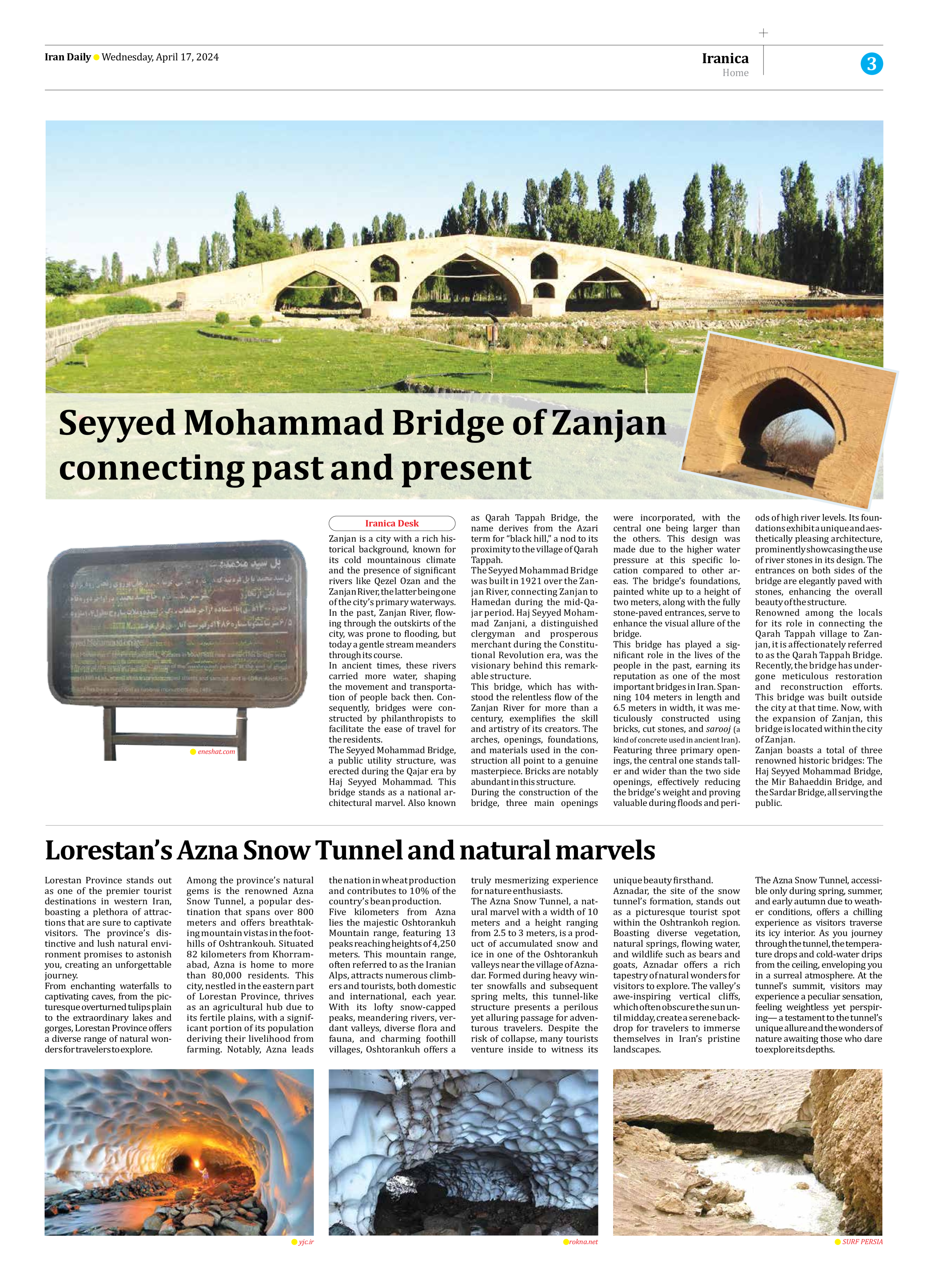
Seyyed Mohammad Bridge of Zanjan connecting past and present
Zanjan is a city with a rich historical background, known for its cold mountainous climate and the presence of significant rivers like Qezel Ozan and the Zanjan River, the latter being one of the city’s primary waterways. In the past, Zanjan River, flowing through the outskirts of the city, was prone to flooding, but today a gentle stream meanders through its course.
In ancient times, these rivers carried more water, shaping the movement and transportation of people back then. Consequently, bridges were constructed by philanthropists to facilitate the ease of travel for the residents.
The Seyyed Mohammad Bridge, a public utility structure, was erected during the Qajar era by Haj Seyyed Mohammad. This bridge stands as a national architectural marvel. Also known as Qarah Tappah Bridge, the name derives from the Azari term for “black hill,” a nod to its proximity to the village of Qarah Tappah.
The Seyyed Mohammad Bridge was built in 1921 over the Zanjan River, connecting Zanjan to Hamedan during the mid-Qajar period. Haj Seyyed Mohammad Zanjani, a distinguished clergyman and prosperous merchant during the Constitutional Revolution era, was the visionary behind this remarkable structure.
This bridge, which has withstood the relentless flow of the Zanjan River for more than a century, exemplifies the skill and artistry of its creators. The arches, openings, foundations, and materials used in the construction all point to a genuine masterpiece. Bricks are notably abundant in this structure.
During the construction of the bridge, three main openings were incorporated, with the central one being larger than the others. This design was made due to the higher water pressure at this specific location compared to other areas. The bridge’s foundations, painted white up to a height of two meters, along with the fully stone-paved entrances, serve to enhance the visual allure of the bridge.
This bridge has played a significant role in the lives of the people in the past, earning its reputation as one of the most important bridges in Iran. Spanning 104 meters in length and 6.5 meters in width, it was meticulously constructed using bricks, cut stones, and sarooj (a kind of concrete used in ancient Iran). Featuring three primary openings, the central one stands taller and wider than the two side openings, effectively reducing the bridge’s weight and proving valuable during floods and periods of high river levels. Its foundations exhibit a unique and aesthetically pleasing architecture, prominently showcasing the use of river stones in its design. The entrances on both sides of the bridge are elegantly paved with stones, enhancing the overall beauty of the structure.
Renowned among the locals for its role in connecting the Qarah Tappah village to Zanjan, it is affectionately referred to as the Qarah Tappah Bridge. Recently, the bridge has undergone meticulous restoration and reconstruction efforts. This bridge was built outside the city at that time. Now, with the expansion of Zanjan, this bridge is located within the city of Zanjan.
Zanjan boasts a total of three renowned historic bridges: The Haj Seyyed Mohammad Bridge, the Mir Bahaeddin Bridge, and the Sardar Bridge, all serving the public.







